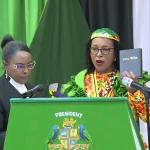Riot Act of Dominica (Chapter 10:02)

The Riot Act of Dominica, formally titled Chapter 10:02 of the Revised Laws, was enacted in 1897 during the colonial era and remains part of the country’s legal framework. Its primary purpose is to provide law enforcement and authorities with the legal means to control, disperse, and penalize unlawful assemblies and riotous behavior. Though rooted in 19th-century law, the Act continues to be applied in modern cases, sparking debate over its compatibility with constitutional rights.
Riot Act of Dominica Historical Context
Enacted under British colonial administration, the Riot Act mirrored similar laws across the British Empire, aiming to give colonial governments the power to respond swiftly to civil unrest. In Dominica, it was passed in 1897 and has been retained in the legal code since, as Chapter 10:02 in the revised laws of the Commonwealth.
Key Provisions of the Riot Act
1. Authority to Disperse Unlawful Assemblies
- Under Section 3, if twelve or more persons are assembled in a manner deemed riotous or tumultuous, a magistrate, mayor, justice of the peace, or commissioned officer may read the Riot Proclamation, ordering them to disperse.
- The proclamation is a formal announcement requiring the crowd to disperse within one hour.
2. Use of Force if the Crowd Refuses
- If the assembly does not disperse after the proclamation, law enforcement is legally empowered to use necessary force, including the use of arms, to disperse or arrest participants.
- Section 5 protects officials and law enforcement from prosecution if injury or death occurs during lawful execution of these powers.
3. Penalties for Rioters
- Any individual who remains after the proclamation is read may be charged with felony, punishable by up to life imprisonment, depending on the nature and severity of the riot.
- Those involved in injuring others, destroying property, or obstructing officers during the riot may face additional charges.
4. Protection of Lawful Authority
- The Act includes immunity clauses protecting officials from liability if force used was in accordance with the Act’s provisions.
Modern Application and Legal Debate
While the Riot Act remains active legislation, its application has been controversial in recent years. In March 2025, individuals were charged under Section 10(2) of the Act following an incident in Roseau. Legal commentators and human rights advocates have questioned whether the law aligns with the Constitution of Dominica, particularly regarding rights to freedom of assembly, expression, and protection from excessive force.
A 2016 legal challenge brought attention to the Riot Act’s vague language and lack of modern safeguards, especially in comparison to contemporary standards of law enforcement accountability.
Relationship to the Public Order Act
Though sometimes confused with the Public Order Act (1954), the two laws are separate. The Riot Act is specific to managing riots and unlawful assemblies, while the Public Order Act deals more broadly with permits for public processions, control of loudspeakers, and regulation of public meetings.
Continued Relevance
Despite its colonial origin, the Riot Act of Dominica is still used in legal proceedings today. Its endurance highlights the need for legal reform and modernization of public safety laws to ensure they align with human rights protections and democratic standards.




